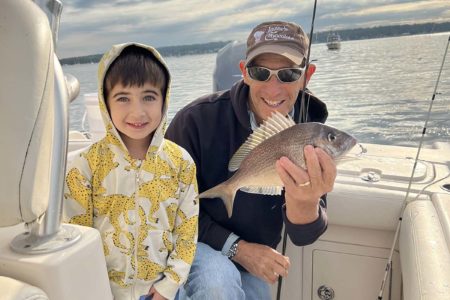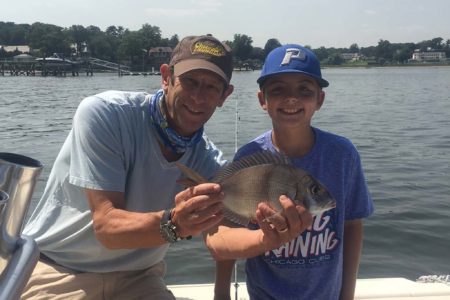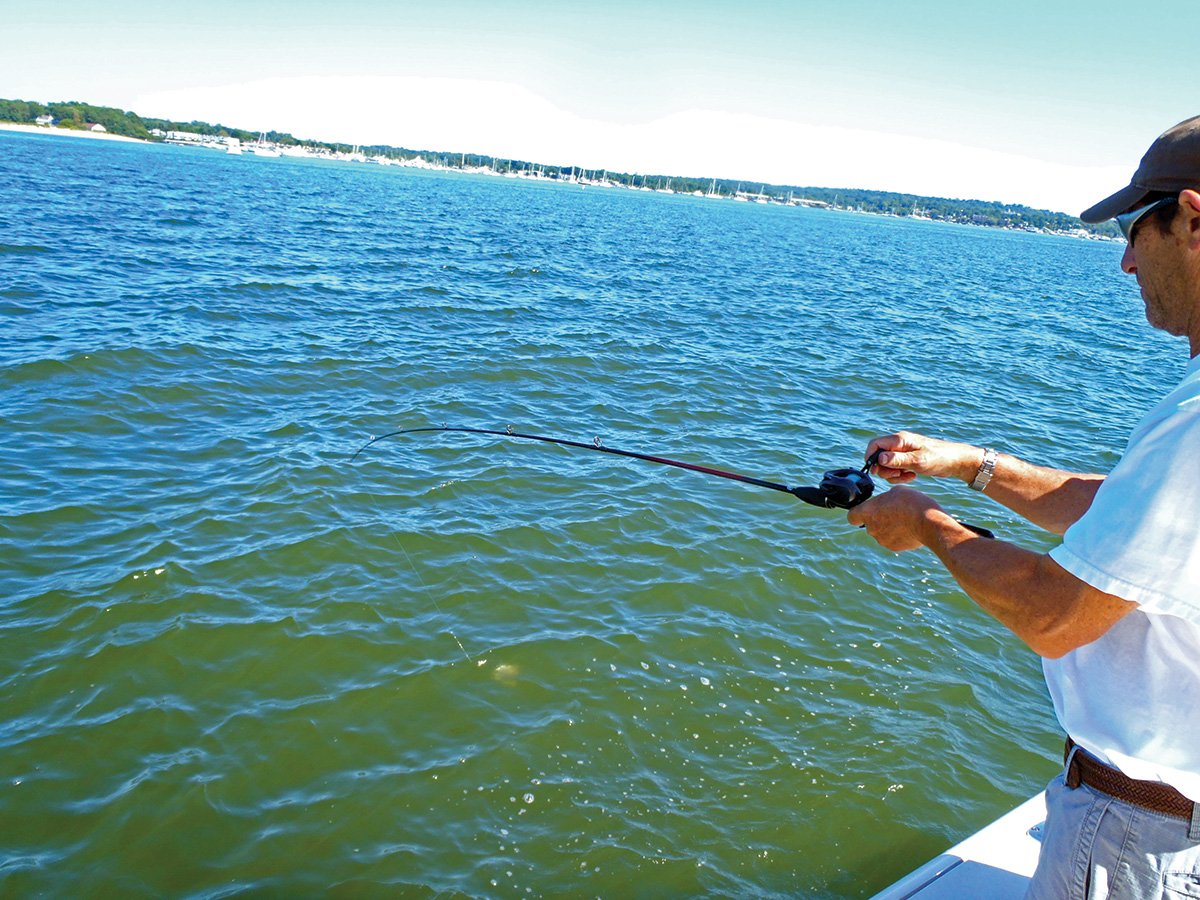
Sometimes, you just get lucky and good fortune pushes you from old comfortable habits towards wonderful and unimagined angling opportunities. This is exactly what happened to me and Rich Lazar in the summer of 2016. Our choice of porgy spots has evolved over the years. In recent years, we’ve abandoned the long trips out of Manhasset Bay to Centre Island and Oak Neck in favor of a short ride to the deeper waters off Execution Light. Now, Execution Light is a great place to fish for porgies – no argument there. The bottom is a maze of rock clusters, ridges, and shell beds that attract schools of porgies, but there are disadvantages, too. For example, the current often runs strong, and the porgy schools tend to roam around from one bottom piece to another.
Also, because of the strong current at the light, a wind against tide scenario makes it close to impossible to anchor and set up without the boat swinging wildly, and the up and down motion on the waves makes it difficult to keep baits still on bottom. Although we’ve had some terrific days at the light, we’ve also had days where yesterday’s GPS numbers didn’t produce, or sea conditions did not allow us to set up on the fish.
Frustration
Frustration precedes learning. It is frustrating to anchor, set the chum pot, and only pick on a few fish. The frustration grows when one is forced to repeat the search, anchor, and chum process again, and again. And, of course, the strong currents at Execution can negate the chumming effort since the chum ends up way, way behind the boat. We usually chum anyway at the light, but in my heart I know we’re wasting chum and maybe setting up a scenario where our chum pulls the fish away from the boat. Therefore, many anglers choose to drift, but the bottom is so rugged in so many places that hang ups are inevitable. It can also be frustrating to snag, lose a rig, and waste fishing time retying. We longed for easier spots and more consistent action.
Sometimes I can be dense about things, and the only way to get through to me is to hit me over the head with a two-by-four. For years, John Richie at Terminal Tackle had been urging me to fish shallow for the pork chops. I nodded in the affirmative, but never followed through. I did, from time to time on trips with Rich and Marc Lazar, have the urge to try shallow fishing and perhaps I mentioned John Richie’s suggestion, but we never did work at it.
But then there was a gift delivered to us by a horrible three hours of fishing at the light in 2015. Rich and I must have re-anchored six or eight times without finding fish. We looked around at the other boats and no one was catching anything either.
“Rich, let’s move inshore and try some of the rock clusters off the points.” I said. Rich said nothing so I said, “Hey, what do we have to lose?”
He couldn’t argue since the day was going very badly. However, I don’t believe Rich’s heart was into the move.
“Let’s drift until we get a fish and then we can anchor and chum.” I said. We went in on the right side of a point on an incoming tide and began a drift. The response of the porgies was instantaneous as they began banging away at our clam baits. We anchored and lowered the chum pot and the bites were furious. Unfortunately, the fish were quite small, and I know Rich was disappointed about that, although his silence and noncommittal look was not a direct rejection of the move.
“Have faith,” I said, “The chum should attract some larger fish and for now let’s work through all the little guys.” Indeed, soon, mixed with the midgets were 12- to 14-inch porgies.
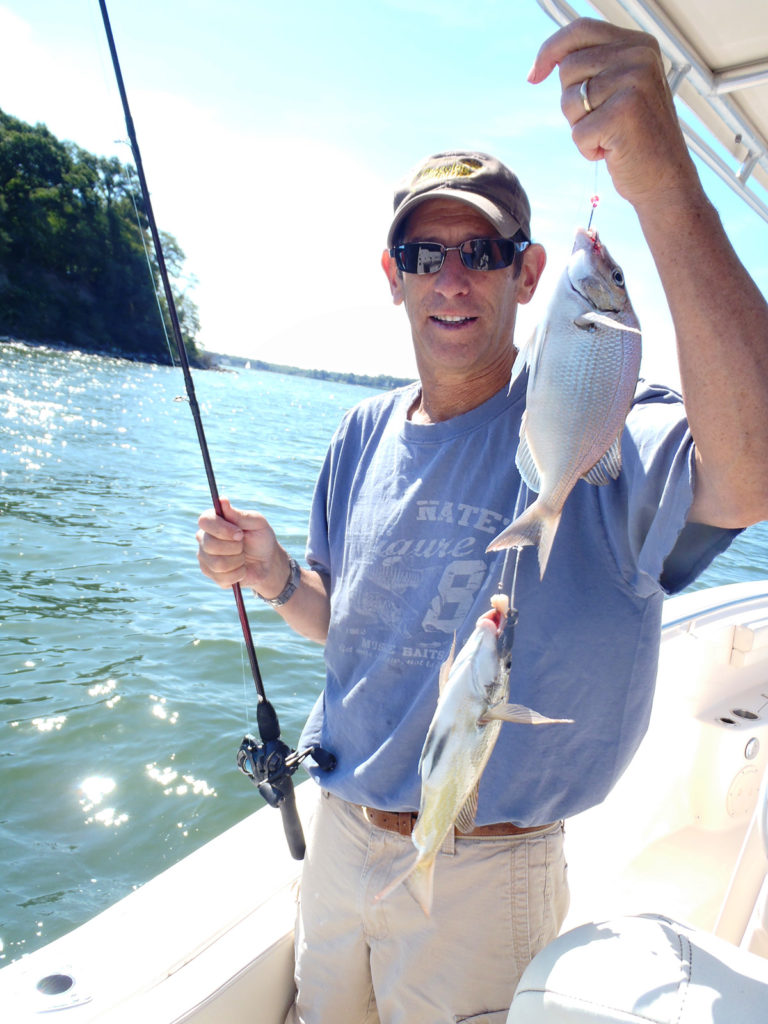
Refine The Concept
We spent the next few trips refining our approach by working different depths of water, from perhaps 5 to 15 feet or so, and by exploring each point methodically. Our patient work yielded lots of information. We discovered that not every point was productive, that some held larger fish, and that at each point there were a few nooks and crannies that held most of the fish. Then, we explored isolated structure in the shallows and again found that some produced big fish, some produced small fish, and some bottom pieces produced nothing. Finally, we narrowed the productive tidal window at each spot, and found that some spots were better on the flood tide while others produced more fish on the ebb.
The 2014-year class of porgies was gigantic. I first realized this when blues and stripers blitzed on 3- and 4-inch young of the year porgies in September 2014. Every North Shore harbor I visited was alive with the baby porgies as blues and bass gorged themselves on tiny pork chops. I knew that young of year porgies were on the menu because from time to time the predators spit them up, and at other times a school of blues pushed pods of baby porgies onto the shore. As much as I enjoyed the bass-blue blitzes, I was also excited knowing that in a few years there would be some fantastic porgy action. I tell you this because in the following year, 2015 as we explored the shallow waters, we were plagued by 6- and 7-inch porgies. In fact, it was the abundance of the little guys that started me thinking about ultralight tackle.
The year 2016 witnessed larger porgies; some were the 2014-year class now 7 and 8 inches long, but there was also an influx of 12- to 14-inch porgies for reasons I cannot explain. Nonetheless, the combination of bigger fish plus shallow water fishing opened the door for superior ultralight tackle porgy fishing.
Tackle
I was the first to down-size my tackle. Although I’ve always used light tackle for porgies, I decided with so many 2014 porgies around that I was going to get the most fun I could out of them. Perhaps I went too far, but as it turned out the tackle was tons of fun. I started with a freshwater outfit that I use for panfish. When that worked out so well I settled on a 6-foot ultralight rod wedded to a crappie size reel. My second combo is a 6-foot ultralight casting rod combined with a small baitcasting reel. There’s no question a 14-inch porgy puts a huge bend in any of these outfits, and should that porgy, during the initial stage of the fight get itself between two rocks, there isn’t much the angler can do but hold on and hope the porgy wiggles out of the structure. However, this doesn’t happen very often and instead of lifting a fish into the boat in seconds, I enjoy a much longer fight.
At first Rich continued to fish with the same light outfit he used at Execution Light. However, he saw how much fun I was having and without mentioning it bought an ultralight baitcasting combo. I didn’t notice the new gear the first time he brought it on the boat, until it was time for photos.
“What’s up with that rod and reel? Is it new?”
“Yeah,” he said. “After watching you with your noddle sticks, I decided to get in on the fun.”
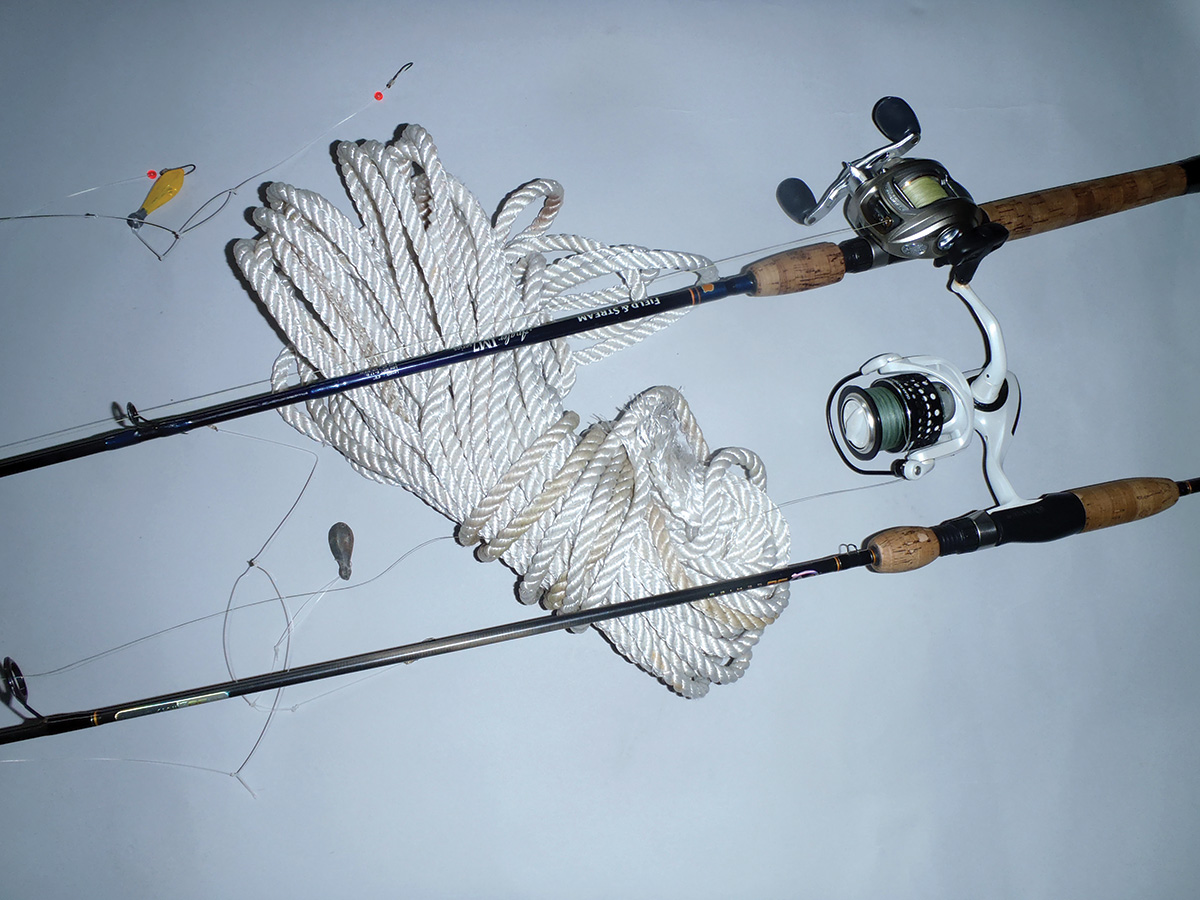
Benefits
One of the added benefits of fishing in shallow water is that currents are weaker around the sides of Sound points. The stronger currents at Execution Light are primarily a result of the nearby East River that dominates both the strength of the tide as well as when the current changes. Close to shore the currents are more closely associated with the tide change and are out of the main river flow. More gentle current allows us to use ultralight gear with ease, but there are other perks, too.
For one thing, we’re able to use 1-ounce sinkers that in turn allow the porgies more freedom to fight harder. The light sinker also provides the angler with a better feel of the bottom and porgy bites. My son Drew came along on a trip and discovered the importance of the “feel” thing. Although we offered him some ultralight gear, he insisted on using a light combo that he’d used before in deeper water with more current off Eaton’s Neck. He quickly discovered that although he did feel bites, he didn’t feel the real subtle ones and he had trouble hooking up. Soon, with strong urging I handed him my ultralight baitcasting setup, and he put his rod in a holder. He lowered his bait and immediately hooked up.
“Now I understand what you guys were talking about.” He said. Rich laughed knowingly.
Another benefit in shallow water is that chum pays off big time. The chum stays close to the boat, and whereas a strong current thaws the frozen chum log quickly only to pull the chum rapidly out of the pot, less current in the shallows gives us double the life span of a chum log.
I understand that deep water bottom pieces abound in the western Sound, that they are very productive, and offer the occasional bonus of a few legal sea bass, but on those hard-current days, on those wind-against-tide days, and on those days when you simply can’t find them deep, try the shallows with an ultra-light combo so you can get in on the fun.

